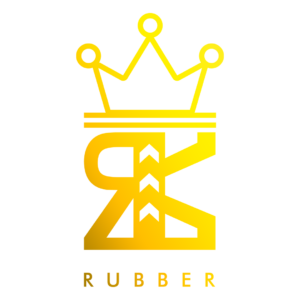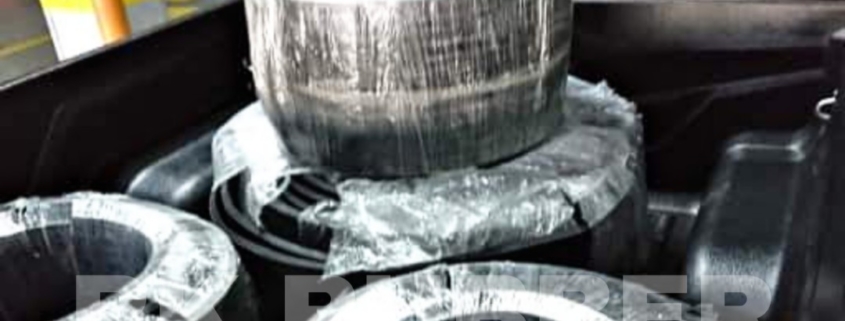Rubber Water Stopper Manufacturer in the Philippines
RK Rubber Enterprise Co. is a leading manufacturer of high-quality rubber water stoppers in the Philippines. Our rubber water stoppers are designed to provide excellent water and liquid resistance, tearing and, abrasion and corrosion resistance, making them ideal for various industrial applications. Their flexibility and elasticity can accommodate movements and vibrations, ensuring optimal sealing performance. Suitable for piping systems, automotive, and aerospace industries, our rubber water stoppers offer a cost-efficient solution for preventing water leakage and ensuring structural integrity. Discover how our rubber water stoppers can benefit your project and further explore their features and applications.
Key Points
- RK Rubber Enterprise Co. offers rubber water stoppers that prevent water passage through joints and openings and have excellent water and liquid resistance.
- Their rubber water stoppers provide outstanding tearing and abrasion resistance, corrosion resistance, and flexibility for various industrial applications.
- The company’s rubber water stoppers are ideal for piping systems and sealing applications, ensuring the integrity and longevity of structures and systems.
- RK Rubber Enterprise Co. manufactures cost-effective rubber water stoppers that are easy to install and accommodate movements and vibrations without losing sealing properties.
- Their rubber water stoppers are made from natural or synthetic rubber-like EPDM or neoprene, tailored to specific project requirements, and offer easy installation and maintenance.
What Is a Rubber Water Stopper
The rubber water stopper, a crucial component in construction and mechanical engineering, is designed to prevent the passage of water through joints and openings, thereby protecting structures from water damage and ensuring their longevity. This innovative solution offers numerous benefits, including excellent water and liquid resistance, outstanding tearing and abrasion resistance, and corrosion resistance. The rubber water stopper’s properties make it an ideal material for various industrial applications.
Made from natural or synthetic rubber, such as EPDM or neoprene, the water stopper’s composition provides flexibility and elasticity, allowing it to accommodate movements and vibrations without compromising its sealing properties. This customization option enables the water stopper to be tailored to specific project requirements. The rubber water stopper’s advantages extend to its ease of installation, lower maintenance, and cost-effectiveness compared to metal alternatives.
In industrial settings, the rubber water stopper is used in piping systems, sealing applications, and automotive and aerospace industries, where water or fluid leakage prevention is vital. With its versatility and range of applications, the rubber water stopper is essential in ensuring the integrity and longevity of structures and systems.
Different Applications
As civil engineering projects evolve, the rubber water stopper has become critical in preventing water infiltration and ensuring structural integrity, finding diverse applications in valley-dammed reservoirs, retaining walls, and drainage systems.
In dam protection, rubber water stoppers are inserted into the dam’s spillway, creating a watertight seal that prevents water from flowing over the top and eroding the surrounding soil. Similarly, in erosion prevention, retaining walls are built to keep soil in place, with rubber water stoppers holding massive pressure and effectively holding large amounts of soil.
In drainage solutions, rubber water stoppers are used in French drains to prevent water from accumulating around the foundation of buildings. Installing a rubber water stopper at the end of the French drain pipe allows water to be channeled away from the structure, reducing the risk of damage.
The rubber properties of flexibility, elasticity, and corrosion resistance make it an ideal material for these applications. By understanding the diverse applications of rubber water stoppers, engineers and builders can design and construct more efficient and sustainable infrastructure projects.
Installation for Building Construction
During the installation process of rubber water stoppers in building constructions, identifying the correct spot on the wall where the rubber stopper is to be placed is crucial. This ensures the stopper is properly positioned to provide effective waterproofing and sealing solutions. In building constructions, rubber water stoppers play a vital role in maintaining structural integrity by preventing water ingress and damage to building materials.
Proper installation involves drilling a hole slightly larger in diameter than the rubber stopper and inserting it into the hole, ensuring it is level with or slightly above the wall’s surface. Silicone caulk can be used to seal around the edge of the rubber stopper for added protection. The rubber water stopper can effectively prevent water damage and erosion by following correct installation procedures, ensuring the structure’s longevity.
In construction methods, rubber water stoppers are often used with other waterproofing techniques to provide a comprehensive sealing solution. By selecting the suitable rubber water-stopper material and design, builders can ensure a reliable and durable seal that meets the demands of various building applications.
Maintenance of Rubber Water Stoppers
Regular maintenance is essential to ensure the optimal performance and longevity of rubber water stoppers, which are critical components in maintaining the structural integrity of buildings and preventing water damage.
To ensure the optimal performance of rubber water stoppers, regular maintenance is crucial. Here are some essential tips:
- Cleaning tips: Clean rubber water stoppers regularly with a mild detergent and soft brush to prevent dirt and debris accumulation.
- Preventing mold: Use a product specifically for rubber materials to prevent mold and mildew growth.
- Longevity benefits: Proper storage and handling of rubber water stoppers can extend their lifespan and prevent premature degradation.
- Proper storage: Store rubber water stoppers in a cool, dry place, away from direct sunlight and moisture, to prevent environmental impact.
Features of Rubber Water Stopper
The rubber water stopper‘s exceptional features, including its outstanding water and liquid resistance, excellent tearing and abrasion resistance, and good corrosion resistance, make it an essential component in construction and mechanical engineering.
The material composition of rubber water stoppers, typically made from natural or synthetic rubber, provides advantages such as flexibility, durability, and resistance to various chemicals. The design of rubber water stoppers, available in various shapes and profiles, allows for excellent flexibility and elasticity, making them ideal for sealing applications.
The primary function of rubber water stoppers is to act as a water barrier, sealing joints in concrete structures, pipes, and other installations. Their durability and corrosion resistance ensures a long-lasting seal, reducing the need for frequent maintenance. With applications in civil engineering, mechanical engineering, and piping systems, rubber water stoppers offer a cost-effective solution for sealing joints and preventing water leakage.
Overview of Rubber Water Stopper
Rubber water stoppers, a crucial component in construction and mechanical engineering, are designed to prevent the passage of water through joints and openings. These stoppers are typically made from natural or synthetic rubber, such as EPDM or neoprene, and come in various shapes and profiles, including dumbbell, ribbed, or serrated.
Here are the critical aspects of rubber water stoppers:
- Material Composition: Made from natural or synthetic rubber, including EPDM or neoprene.
- Design: Features various shapes and profiles, such as dumbbell, ribbed, or serrated.
- Function: Acts as a water barrier to seal joints in concrete structures, pipes, and other installations.
- Applications: Used in civil engineering, mechanical sector, piping systems, and sealing applications.
Rubber water stoppers offer several benefits, including excellent flexibility and elasticity, good chemical resistance, and ease of installation and maintenance. They are also cost-effective compared to metal alternatives. However, they may have some disadvantages, such as degradation under certain conditions, like UV exposure. Overall, rubber water stoppers are crucial in various industries, providing adequate water sealing and protection.
Comparison With Other Materials
In contrast to rubber water stoppers, metal alternatives have distinct characteristics that set them apart regarding flexibility, durability, and installation requirements. A durability comparison between the two reveals that rubber water stoppers are more resistant to various chemicals and environmental conditions, although they can degrade under certain conditions. On the other hand, metal alternatives are susceptible to corrosion and rust, particularly in harsh environments. In terms of cost efficiency, rubber water stoppers are generally more cost-effective, both in terms of initial material cost and installation labor. The installation process for rubber water stoppers is also more straightforward due to their flexibility, allowing them to be cut to size on-site. Metal alternatives, however, require precise fabrication and regular maintenance to prevent corrosion in terms of material flexibility. Rubber water stoppers accommodate movements and vibrations without losing their sealing properties. Overall, the choice between rubber and metal water stoppers depends on the project’s specific requirements, with rubber offering a more cost-efficient and flexible solution.
Frequently Asked Questions
Can Rubber Water Stoppers Be Used in High-Pressure Applications?
Rubber water stoppers can be used in high-pressure applications, provided material selection is tailored to withstand hydrostatic stress, ensuring seal integrity and burst resistance through rigorous pressure testing and material characterization.
How Long Do Rubber Water Stoppers Typically Last in Service?
The lifespan of rubber water stoppers depends on material quality, installation methods, environmental factors, maintenance schedules, and usage patterns, typically ranging from 10 to 20 years, with proper care and maintenance extending their service life.
Are Rubber Water Stoppers Resistant to Petroleum-Based Products?
While rubber water stoppers are generally resistant to petroleum-based products, their performance can be compromised by chemical reactions, emphasizing the importance of material selection, adherence to industrial standards, and consideration of environmental impact and safety protocols.
Can Rubber Water Stoppers Be Used in Applications With High Temperatures?
Rubber water stoppers exhibit thermal resistance, tolerating high temperatures without significant material degradation, as their thermal expansion properties and heat transfer rates enable efficient temperature management, making them suitable for high-temperature applications.
Are Custom Sizes and Shapes Available for Rubber Water Stoppers?
Yes, custom sizes and shapes are available for rubber water stoppers, offering design flexibility with various material options, minimal size limitations, and shape complexity enabled by a versatile manufacturing process.
Conclusion
The rubber water stopper is the unsung hero of the construction industry, serving as a robust shield against water infiltration. Like a sentinel, it stands guard, protecting structures from the corrosive forces of water. By understanding its features, applications, and maintenance requirements, construction professionals can ensure the integrity of their projects. As a vital component in modern construction, the rubber water stopper is an indispensable ally in the quest for structural excellence.

